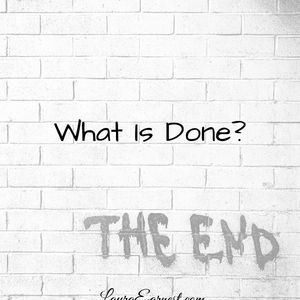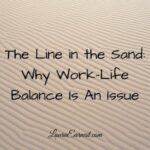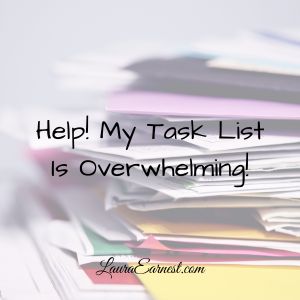How do you know you are done traveling if you don’t know where you’re going? None of us would start a journey without some destination, or even just an idea of what you want to accomplish. Imagine running errands without any idea of what you needed to do!
Of course it makes sense when I put it like that, but how many of us know what we are trying to accomplish with our projects? Few of us actually stop and think about what Done looks like. We may have a vague idea, but most of us just plunge into the project without considering the end.
According to the Getting Things Done: The Art of Stress-Free Productivity* philosophy, you have to know what you are trying to accomplish with any given project. In other words, you have to know what Done is in order to get there.
I rarely consider the outcome when I am doing my weekly planning. At that point I am all about planning for the next week, not wanting to do the heavy lifting of scoping out the project.
But if you don’t scope out the project, it’s going to be bigger than you think.
Veni, Vidi, Pictam
A recent example: paint the back wall of the living room.
We had some repairs done to the wall, nothing major, but they needed to be painted. So the project was entered as you see above: “paint the back wall of the living room.” And at first glance, it seems apparent what Done is.
But painting is never “veni vidi vici” (I came, I saw, I conquered, or in this case, pictam, painted). Once I’m done painting I still have all the cleanup to do. Wash the brushes. Remove the tape. Touch up spots.
Some would say this is part of the job. But when time estimating, I know it will take me about two hours to prep and paint the area. But the cleanup will take another hour. If I consider the job done when the painting is done, there is still a lot left to do. Mis-defining Done can mean the difference between a job done, and a job started and left uncompleted because I ran out of steam or time.
Why You Should Define Done
The main benefit of figuring out Done is that you have a better idea of what effort and time you need to get there.
But there is another benefit as well.
If I am going through the steps of what will take me to done, and I see that it is going to require a lot more effort than I thought, I can consider the Return on Investment (ROI). It may be that the time and effort required to bring a project to Done may be more than I have at the moment. And at that point, it is better for me to find a project that works better with both my time and energy.
I know that many times I put things on my list, not thinking about how to complete it. And then, recognizing it is going to take more time than I thought, I put it off. Even if I have a block of time assigned to do it, I pass it by. So in this case, not defining done means that I procrastinate. And that plays into the task lists that never seem to get done.
Next Steps
For me, taking time to think about Done means that I can’t do it during my weekly planning session. As I’ve already said, the weekly planning is about getting the plan together. So I have started a mid-week session to look at my projects. This allows me not only to see what is on my plate but also to load balance so I don’t take too much on. By adding determining Done to this time, I can decide if I have the time and energy to do the project right now, or if it will have to wait.
Do you know what Done is on your projects? Have you accounted for the after-work properly? Or do you have a completely different method to handle this? Share below.







